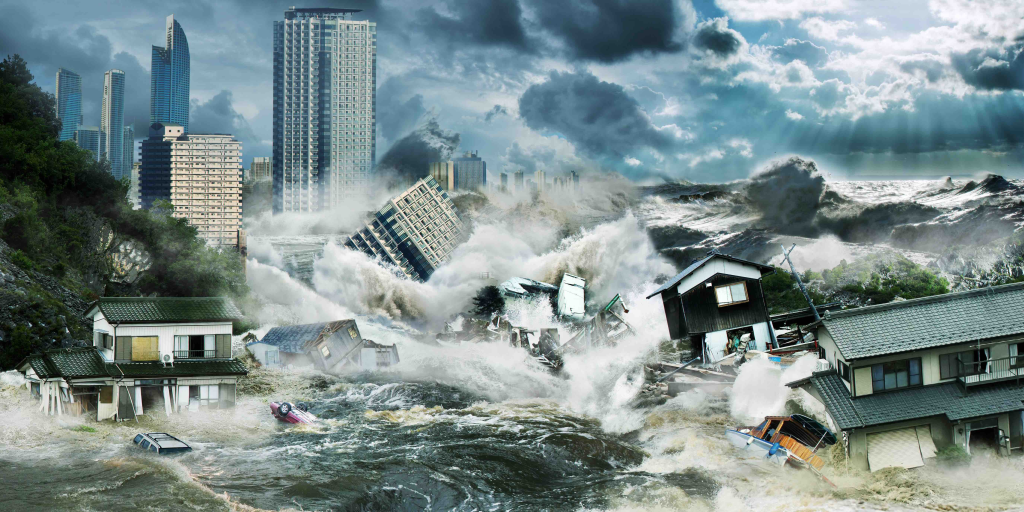Japan recently experienced a powerful earthquake, measuring 7.6 on the Richter scale, in the Ishikawa region. This event has had a significant impact on travel, with transportation and communication services disrupted. In this article, we will provide you with the latest updates on the travel situation and discuss the necessary precautions during such emergencies.
Flight Cancellations and Airport Closure
Japanese domestic airlines have been forced to cancel flights to and from airports in the affected regions. All Nippon Airways reported the cancellation of 15 flights, while Japan Airlines canceled nine. Furthermore, Ishikawa’s Noto Airport is currently closed to traffic, exacerbating transportation disruptions in the affected areas.
Rail Service Suspensions
The East Japan Railway Company has suspended operations on parts of its Hokuriku and Joetsu Shinkansen services until at least Monday. There is uncertainty regarding the resumption of services beyond Tuesday. Travelers should stay updated on the status of rail services and plan alternative routes accordingly.

Impact on Inbound Tourism
Japan has seen a near-complete recovery in inbound tourism, with the estimated number of international travelers to Japan in October 2023 exceeding the same month in 2019 for the first time since the Covid-19 pandemic, according to the Japan National Tourism Organization (JNTO). However, the recent earthquake and tsunami warnings may impact the tourism industry once again. Travelers should stay informed about any advisories or restrictions before planning their trips to Japan.
Coastal Areas on High Alert
Coastal areas in Niigata, Toyama, and Ishikawa are under heightened alert, and residents have been urged to evacuate promptly. Officials emphasize the importance of moving to higher ground and putting as much distance as possible between themselves and the coast to minimize potential risks.
Tsunami Warning and Potential Risks
The Japan Meteorological Agency initially issued a “major tsunami warning” for Ishikawa Prefecture, but it has since been downgraded to a “tsunami warning.” However, caution is still advised as tsunamis may repeatedly strike the coast and potentially increase in height. Travelers should follow the instructions of local authorities and stay updated on any changes in the situation.
Road Closures and Infrastructure Disruptions
Chief Cabinet Secretary Hayashi Yoshimasa disclosed that certain sections of five expressways have been closed as a precautionary measure. Travelers should be aware of these road closures and plan alternative routes accordingly. Additionally, power outages have been reported in 33,000 households, and mobile phone communication services in Ishikawa and Niigata prefectures have been disrupted. It is essential to have alternative means of communication and stay connected with loved ones during such emergencies.
Disaster Message Board System
Four prominent telecom carriers, NTT Docomo, KDDI, Softbank, and Rakuten Mobile, have implemented a disaster message board system. This system allows users to share their safety status through text messages on the internet. The posted information is accessible via smartphones, other mobile devices, and computers. Travelers can utilize this system to stay connected and informed during emergencies.

Precautions for Travelers
For those currently in the affected areas or planning to travel to Japan, here are some essential precautions to consider:
- Stay informed: Stay updated on the latest news and advisories from local authorities and travel agencies. Follow their instructions and guidelines to ensure your safety.
- Plan alternative routes: If you have upcoming travel plans in the affected regions, consider alternative routes and transportation options to avoid disruptions. Check with airlines, railway companies, and bus services for any changes or cancellations.
- Maintain communication: Have multiple means of communication, including mobile phones, internet messaging apps, and emergency contact numbers. Inform your loved ones about your whereabouts and stay connected during the emergency.
- Follow evacuation orders: If you are in a coastal area or an area under evacuation orders, follow the instructions promptly. Move to higher ground and ensure your safety.
- Pack emergency supplies: Carry essential items like food, water, medication, and a first aid kit. Also, have necessary documents, such as identification and travel insurance, readily available.
- Stay in touch with your embassy: If you are a foreign traveler, register with your country’s embassy or consulate in Japan. They can provide you with important updates, assistance, and support during emergencies.

Conclusion
The recent earthquake and tsunami warnings in Japan have had a significant impact on travel, with disruptions in transportation and communication services. Travelers should stay informed about the latest updates, follow evacuation orders, and take necessary precautions to ensure their safety. By staying prepared and following the guidelines of local authorities, travelers can navigate through emergencies with minimal risks.




No comments! Be the first commenter?